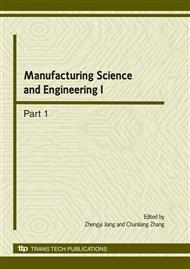p.306
p.311
p.315
p.320
p.324
p.328
p.332
p.337
p.344
Microstructure and Mechanical Properties of Heavy Gauge Plate by Vacuum Cladding Rolling
Abstract:
The cladding steel plate was successfully produced using vacuum cladding rolling method. In cladding steel plate, cladding interface vanished and was replaced new recrystallized grains, and no interface defects or inclusions were detected. Z direction tensile testing indicated that tensile fracture occurred in basal materials, i.e. strength and contraction of cross area are those of basal materials. Furthermore, with decreasing vacuum level of electron beam welding, size and amount of interface inclusions would obviously increase.
Info:
Periodical:
Pages:
324-327
Citation:
Online since:
March 2010
Authors:
Price:
Сopyright:
© 2010 Trans Tech Publications Ltd. All Rights Reserved
Share:
Citation:


